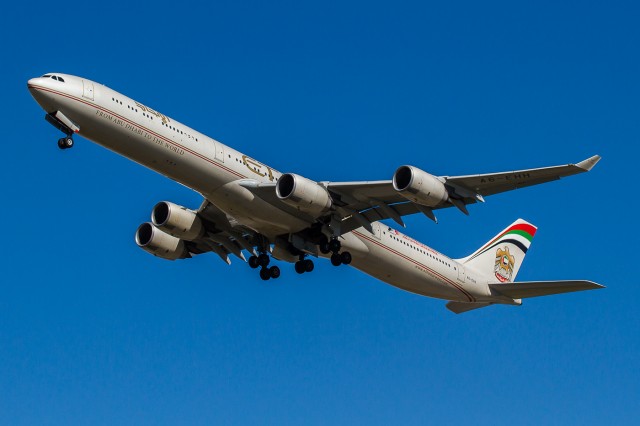
Etihad Airbus A340-600 taking off – Photo: Jacob Pfleger
Recently, Etihad Airways had a very attractive sale on business class fares between its European gateways and Australia, including codeshares with Czech Airlines from Prague. This was simply too good an offer to pass up, being the AvGeek I am.
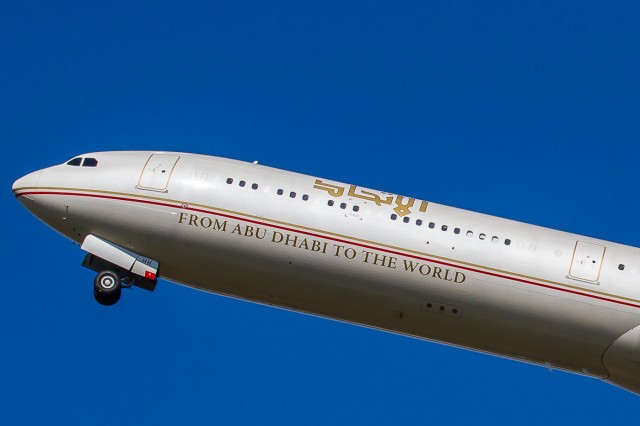
Gear retraction on Etihad A340 – Photo: Jacob Pfleger
As I booked via the Etihad website, I was able to partake in the online upgrade auction system. This program is a fairly recent initiative introduced by Etihad Airways, along with other carriers. The program sends out an email approximately a week before the flight, inviting business class passengers to bid on unsold seats in the first class cabin, as well as business class seats for those in economy. Bids for a first class upgrade ranged from $600-$1500 (USD) for the Abu Dhabi-Sydney flight. I bid $1000, as I was celebrating my birthday and thought it would make a nice present. Bidders are advised of the outcome 48 hours prior to the flight. The system is still in the trial stage; I only got an email T-24 hours, advising that my bid had been accepted.
Upon arriving at the combined first and business class terminal at Abu Dhabi, I was greeted by a porter who took care of my luggage and escorted me to the first class check-in area. Unlike conventional check-in desks, the first class area is set up like a classy hotel, where you take a seat at a desk with an agent who processes your booking. The whole process took no more than five minutes and I was on my way to the first class lounge.
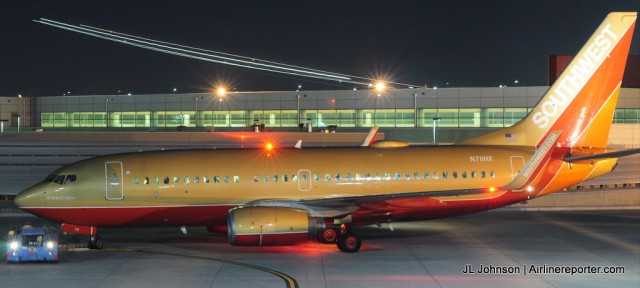
Southwest 737-700 (N711HK) seen at Dallas Love Field with Row 44 raydome between the strobe and vertical stabilizer. It also sports a retro-livery design.
On November 20, 2013 Southwest Airlines announced that, effective immediately, customers could use their portable electronic devices (PEDs) gate-to-gate. This was expected as other airlines had been making similar announcements earlier in the month after the FAA relaxed their rules. What wasn’t expected was that in-flight entertainment (IFE), through their Row 44 WiFi, would also be available gate-to-gate, making them the first U.S. airline to offer a seamless integrated experience, regardless of altitude.
Southwest Airlines has long been a renegade, going against the grain, often being successful with that strategy. When the industry zigs, they zag and usually find themselves with a competitive advantage. And that’s exactly what they did when they bucked the trend of U.S. airlines signing on with traditional passenger-level-hardware IFE. Instead, Southwest chose Row 44, an industry underdog to provide their connectivity. Row 44’s network is powered solely by satellite, whereas (at the time) the other big domestic players (i.e. GoGo) focused on terrestrial (land-based cell tower) service.
BONUS: GoGo Unveils New In-Flight Technology
I’m a known critic of IFE at the airline-provided-hardware level. I am of the school of thought that if you can give me WiFi, I’ll find a way to entertain myself, with my own device(s). BYOD (that is, “bring your own device”) is gaining in popularity across many industries and applications, so why not with airlines? Traditional IFE is expensive to implement, heavy to fly around, and requires added maintenance. With passengers likely to bring the added weight of their own devices anyway, why not simply eliminate the cost and complexity?
Southwest’s in-flight connectivity is nothing new, but has matured well beyond basic WiFi. I recently had the opportunity to try out the new gate-to-gate, or in my case, gate-to-gate-to-gate Row 44 on a business trip from Kansas City with a stopover at Dallas Love Field on my way to San Antonio. Let me say, I was impressed.
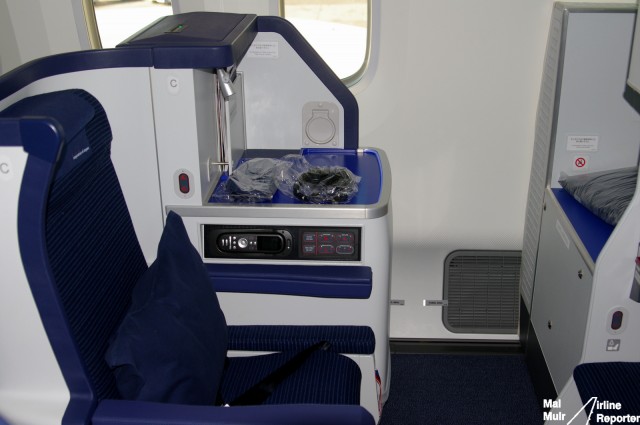
The ANA Business Staggered Seat. This is the “C” seat with the storage window side giving true Aisle access. Chose “A” if you love a true window seat.
During my ANA Ambassador trip, I was given the chance to fly three different types of All Nippon Airways (ANA) Business Class seats and I wanted to share my thoughts on them. For my story, I will be concentrating mostly on the hard product (the seat) vs the ’œsoft’ product (meals, service, amenities), which is common across all the aircraft.
The current generation of Business Class seats are fitted to ANA’s 787 as part of the Inspiration of Japan series. There are two different versions: international and domestic. The long haul (international) 787 seats are called ’œBusiness Staggered’ and are similar to a small pod. This is currently the airline’s premium product. The seats lie fully flat and, with a length of over 6ft, allows passengers to easily get some rest. The Business Staggered seats can also be found in some of ANA’s 777s (though the 777 version is slightly larger).
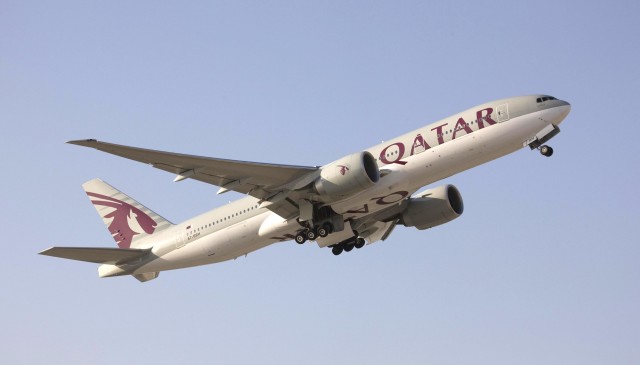
Qatar Airways Boeing 777-200LR – Photo: Qatar Airways
After getting the opportunity to fly on the first Qatar Airways 787 and then also flying back to the US on-board a Qatar Airways 777-200LR I wanted to be able to write a story to compare and contrast the two aircraft.
Since my Qatar Dreamliner flight back in November 2012, the 787 has run into some issues, but at least the aircraft is still flying. Both of my flights were in Business Class and both were about the same length, giving me a great opportunity to compare. Let’s break this down bit by bit…
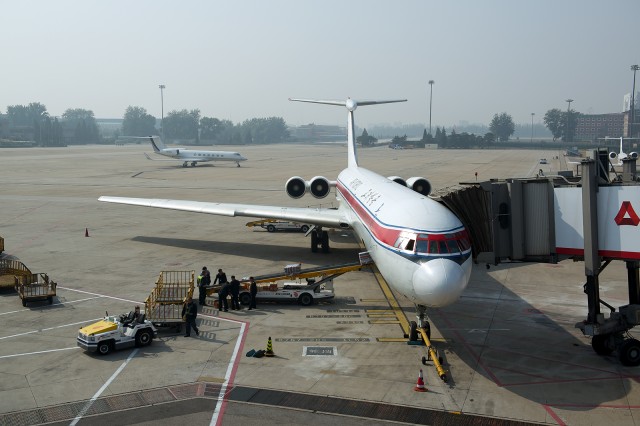
An Air Koryo Ilyushin IL-62 in Beijing, ready for boarding. Photo by Bernie Leighton.
To fly on an Ilyushin IL-62 in 2012 is not something many people would think of doing, let alone going to the lengths I did to enjoy the privilege.
On October 20, 2012 after months of planning, amounts of Euro cash that had bank-tellers convinced I was a spy; a lovely jaunt to Beijing on Air Macau and a visit to Datangshan, I was standing at the check in counter for Air Koryo in Terminal 2 at Beijing Capital International Airport (PEK). Oddly, and unfortunately for collectors of rare boarding passes, flights to Pyongyang are issued on Air China stock.
Chinese police, and politeness didn’t really allow me to capture the sight of the sheer amount of cargo the North Korean people were taking back but it was the contents I found more curious than the volume. A cursory search of the bindles and exposed boxes showed mostly flat-screen TVs and other completely civilian commercial goods.





